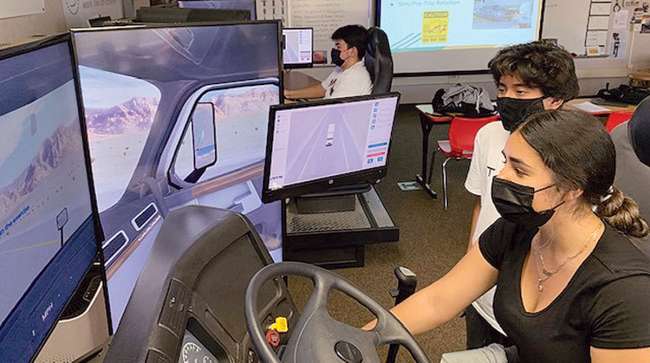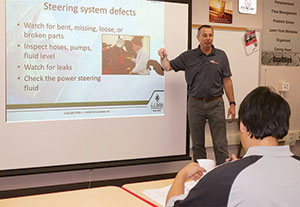Senior Reporter
Effort to Recruit New Truck Drivers Moves Into High Schools

[Stay on top of transportation news: Get TTNews in your inbox.]
An all-volunteer effort is working with educators to help raise awareness of truck driving careers among students.
A key goal of the Louisville, Ky.-based initiative, called the Next Generation in Trucking Association, is to break through common stereotypes that many in education and parents maintain; specifically, that the best and most time-tested path for success for high school students is to work hard in their studies, attend college and enter the workforce at age 22 or 23 — often with a large amount of student debt to pay off, said association president Lindsey Trent.
“What we’re trying to do, as a nonprofit trade association, is raise awareness of the trucking industry,” Trent told Transport Topics. “We’re doing that in several ways. Recently, I gave a presentation to the American School Counselor Association, so all of the school counselors across the United States got to hear a general presentation about the trucking industry and the different jobs that are in trucking.”

Trent
At Patterson High School in Patterson, Calif., about 90 miles east of San Francisco, a program now in its fifth year aims to do exactly that. According to Dave Dein, a teacher at the school and board member of the Next Generation program, students in their senior year can enroll and obtain a commercial driver license after 180 hours of classroom instruction, 110 hours behind the wheel, and another 30 hours in a simulator. Currently, 20 students are enrolled.
“We’re not about pushing students into this industry quick,” Dein said. “We want to make sure that those who choose this industry are well-fitted and they have the proper skills and foundation to do well.”
Plans are underway to expand the program — possibly as soon as next year — to add junior-year students to the program and provide them with an additional 200 hours of classroom instruction before moving up to the more extensive CDL training.
Trent noted that this program is flexible enough to work in many school districts. High schools as far away as Alaska have expressed an interest in replicating it.
“What’s great about the high school program is that we have that flexibility,” said Dein, who noted that he has received positive feedback from employers who have hired his students. While some have remained in full-time driving jobs, others have gone on to college to study for transportation and logistics-related careers.

Dein teaches a class at Patterson High School. (Dave Dein via YouTube)
“There’s a buzz about it now,” he said. “The best word that advertises is word-of-mouth. Students who have graduated the program — they’re finding success in the industry. There’s getting to be a lot more students that want to take the class because they hear about it.”
Once students know someone in the industry, “it seems that it has changed the mindset of what they thought trucking was about,” he said.
Board member and former Commercial Vehicle Training Association CEO Don Lefeve told TT that similar state-level programs could be developed to help offset other labor shortages in the trucking industry.

A trucking student. (Next Generation Trucking Association via YouTube)
“Once you have 18-year-olds driving interstate, we feel that the next step is really going after that career and technical education funding to build programs at the state level,” Lefeve said. “That’s working not only to get them interested while in high school, but really to partner with community colleges and private truck schools that may be in their area to help deliver the skills training for them.”
The Patterson program also uses techniques and research to develop safety and job profile behaviors that incorporate personality traits, physiological characteristics and other individual aspects of students in the training program.
Both Dein and Trent expect more students to express interest in trucking careers now that the DRIVE-Safe Act has been signed into law by President Joe Biden. The law, part of the new $1 trillion federal infrastructure measure, permits drivers younger than 21 to prepare to drive interstate via an extensive, supervised training regimen.
Want more news? Listen to today's daily briefing below or go here for more info:




